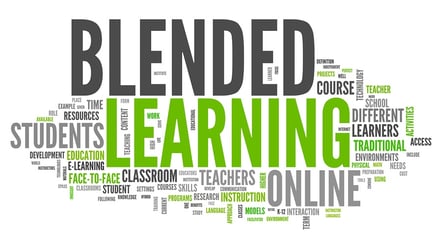TeachThought.com

Blended education. Hybrid learning. Flipping the classroom. Whatever one chooses to call it, this method of learning–which combines classroom and online education–is going places and making headlines along the way. While education experts continue to debate the efficacy of hybrid learning, its very existence has challenged them to re-evaluate not just technology’s place in (and out of) the classroom, but also how to reach and teach students more effectively.
That alone is one of the major benefits of blended learning.
The Definition Of Blended Learning
Defining hybrid or blended education is a trickier task than one might think–opinions vary wildly on the matter. In a report on the merits and potential of blended education, the Sloan Consortium defined hybrid courses as those that “integrate online with traditional face-to-face class activities in a planned, pedagogically valuable manner.” Educators probably disagree on what qualifies as “pedagogically valuable,” but the essence is clear: Hybrid education uses online technology to not just supplement, but transform and improve the learning process.
That does not mean a professor can simply start a chat room or upload lecture videos and say he is leading a hybrid classroom. According to Education Elements, which develops hybrid learning technologies, successful blended learning occurs when technology and teaching inform each other: material becomes dynamic when it reaches students of varying learning styles. In other words, hybrid classrooms on the Internet can reach and engage students in a truly customizable way. In this scenario, online education is a game changer, not just a supplement for status quo. But what does this theoretical model actually look like in practice?
Read the full article here.



